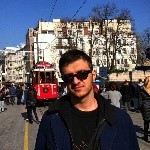Ali Taghibakhshi
Mechanical engineering department, Sharif University of Technology, Tehran, Iran
Title: Numerical Simulation of Tumor Growth: A Modified Mathematical Model for Behavior of Spheroidal Tumor Growth in a Microfluidic device Containing Microwell Structure

Biography:
Ali Taghibakhshi is a bachelor student in the mechanical engineering department of Sharif University Technology. Under supervision of Professor M.S.Saidi and with guidance of Mrs. Barisam, he has done some research in the field of biomechanics and has presented a well-modified model for tumor growth which is applicable to 3D spheroidal tumor growth in microfluidic devices. This is a responsive approach and the results can be used for further researches in this field of study.
Abstract:
Nowadays, cancer is one of the most fatal diseases in the world and number of deaths associated with it is escalating in an uncontrolled way. Thus, determining the characteristics of tumor cells and how they grow is of a great importance. Furthermore, rapid advancement in biomechanics and biomechanical devices has led to the promotion of examining biological phenomena. Monitoring multicellular aggregates and tumor spheroids in a microfluidic system is an elaborate way to determine the characteristics of cancerous tumors. In this paper, such system is numerically investigated to study tumor growth. A modified model for tumor growth procedure based on diffusion of crucial nutrients as well as the formation of quiescent and necrotic zones and their retarding impact on the growth is presented. Assuming spherical symmetry for the spheroidal tumor growth, when it is exposed to unlimited stationary culture medium, the effects of two essential nutrients, i.e., glucose and oxygen, on the tumor growth has been studied and compared to one another. Moreover, the growth of 3D spheroidal tumor, which is exposed to the culture medium fluid flow in a microfluidic system containing an array of microwell traps is studied. Further, for the first time, the formation of necrotic and quiescent zones and their inhibitory influences on the in-microwell-trapped cellular aggregates have been demonstrated. The simulation was done under a specific culture medium flow rate for several days in order to observe the effect of nutrient concentration deficiency on the tumor growth. The results indicate that the glucose concentration is the key item to predict the onset of the quiescent zone in comparison with the oxygen concentration. However, the oxygen concentration determines the formation of the necrotic core. Subsequently, the results state that the tumor growth rate in the microfluidic device is lower than the static culture medium.